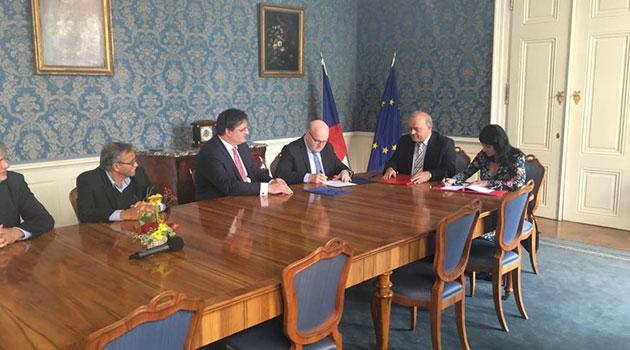Council of Europe Human Rights Commissioner welcomes Czech Govt purchase of pig farm on Romani genocide site

Yesterday the contract to buy out the pig farm in Lety u Písku standing on the site of the former concentration camp for Romani people at Lety was signed at the Czech Culture Ministry. Public figures from around the Czech Republic and representatives of international organizations that have followed developments in this matter have gradually begun expressing their views of this historic moment.
Michal Horáček, candidate for Czech President, posted to Facebook: “In July I visited Lety u Písku. I no longer recall what day it was, but my feelings at that site will stay with me always. The smell was so intensive that it was difficult to perceive anything else, to say nothing of remembering the people and the children who died in those locations. Today we have managed to do something great. Buying out that business, which was desecrating the site of that concentration camp, is more important than investing into any industry or new layer of asphalt on a regional highway. As a society we have demonstrated that we are able to afford to buy an empty space. That empty space is so important to healing the wounds of our past and to respect for others.”
Benjamin Abtan, chair of the European Grassroots Antiracist Movement (EGAM), speaking to Agence France-Presse: “This step represents an historic moment for all Romani people. Now the challenge will be to transform that location, so lacking in respect, into a place of dignity.”
Nils Muižnieks, Human Rights Commissioner of the Council of Europe, posted the following to his Facebook profile: “I welcome the purchase by the Czech Government of the pig farm located on the site of the former Lety concentration camp. I praise the efforts of the authorities and in particular the leading role played in the negotiations by the Minister of Culture. The closure of the farm finally puts an end to an insult to the Roma victims of the Holocaust, the survivors and their descendants. I am aware of the complexity of the removal of the industrial plant from the site where it has been operating for decades. Its reconversion into a permanent and dignified memorial is the challenge which lies ahead for the Roma community, the authorities and the national memorial institutions. Therefore I call upon all stakeholders to engage without delay in a discussion about the future of the site. It is my firm belief that the erection of a memorial is crucial for understanding the fate of the Roma during the Second World War, and that it will send a positive message to society at large.”